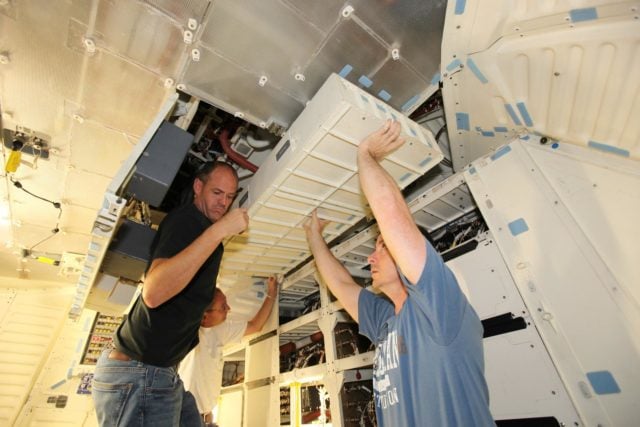
- NASA ORBITER PROCESSING FACILITY SHUTTLE FLO SERIES
- NASA ORBITER PROCESSING FACILITY SHUTTLE FLO FREE
The SLF has also been used by commercial users. During the Augtest at the SLF, a vehicle exploded no one was injured. Multiple vehicles and iterations of the vehicles were tested, due to upgrades and damages during this experimental test program.
NASA ORBITER PROCESSING FACILITY SHUTTLE FLO FREE
Multiple tests, including free flight, were performed at the SLF in 2013–2014. Prior to arrival at KSC and throughout the project, Morpheus vehicle tests were performed at other NASA centers KSC was the site for advanced testing. In 2012, NASA's Johnson Space Center's Project Morpheus's first vehicle arrived at KSC. The X-37B (OTV-4 mission) first used Kennedy Space Center's Shuttle Landing Facility on at 11:47 UTC. In October 2014, NASA signed agreement for the use of the facility, and Boeing upgraded the OPF-1 for the X-37B program. Air Force to efficiently land, recover, refurbish, and re-launch the X-37B uncrewed spacecraft. In January 2014 it was announced that Boeing would lease the Orbiter Processing Facility at Kennedy Space Center to enable the U.S. Discovery and Endeavour took off from the SLF on top of the Shuttle Carrier Aircraft for museums in Washington, D.C. The final landing of a Space Shuttle occurred on Jby Atlantis for STS-135. A total of 78 Space Shuttle missions landed at the SLF. On September 22, 1993, Discovery was the first Space Shuttle to land at night at the SLF on STS-51. Prior to this, all Shuttle landings were performed at Edwards Air Force Base in California (with the exception of STS-3, which landed at White Sands Space Harbor) while the landing facility continued testing and Shuttle crews developed landing skills at White Sands and Edwards, where the margin for error is much greater than SLF and its water hazards. This also marked the first landing of a spacecraft at its launch site. The runway was first used to land a Space Shuttle on February 11, 1984, when Challenger's STS-41-B mission returned to Earth.

Space Shuttle Atlantis landing after STS-122Ĭolumbia was the first Shuttle to arrive at the SLF via the Shuttle Carrier Aircraft on March 24, 1979.
NASA ORBITER PROCESSING FACILITY SHUTTLE FLO SERIES
The Bird Team kept the facility clear of both local and migratory birds during Shuttle landings using pyrotechnics, blank rounds fired from shotguns and a series of 25 propane cannons arranged around the facility.

The landing facility is managed by contractor EG&G, which provides air traffic control services, as well as managing potential hazards to landing aircraft, such as bird life. Ī local nickname for the runway is the "gator tanning facility", as some of the 4,000 alligators living at Kennedy Space Center regularly bask in the sunlight on the runway. This issue was resolved by grinding down the pavement, reducing the depth of the grooves significantly. The original groove design was found to actually provide too much friction for the rubber used in the Shuttle's tires, causing failures during several landings. It uses a grooved design to provide drainage and further increase the coefficient of friction. The runway surface consists of an extremely high- friction concrete strip designed to maximize the braking ability of the Space Shuttle at its high landing speed, with a paving thickness of 16.0 inches (40.6 cm) at the center. The runway is designated runway 15, or 33, depending on the direction of use.

The Mate-Demate Device (MDD), for use when the Shuttle was transported by the Shuttle Carrier Aircraft, was located just off the southern end of the runway. Lousma stated that he would have preferred the runway to be "half as wide and twice as long" ) Additionally, the SLF has 1,001 feet (305 m) of paved overruns at each end. It is one of the longest runways in the world, at 15,000 feet (4,600 m), and is 300 feet (91 m) wide. The Shuttle Landing Facility covers 500 acres (2,000,000 m 2) and has a single runway, 15/33. The Mate-Demate Device at the Shuttle Landing Facility


 0 kommentar(er)
0 kommentar(er)
